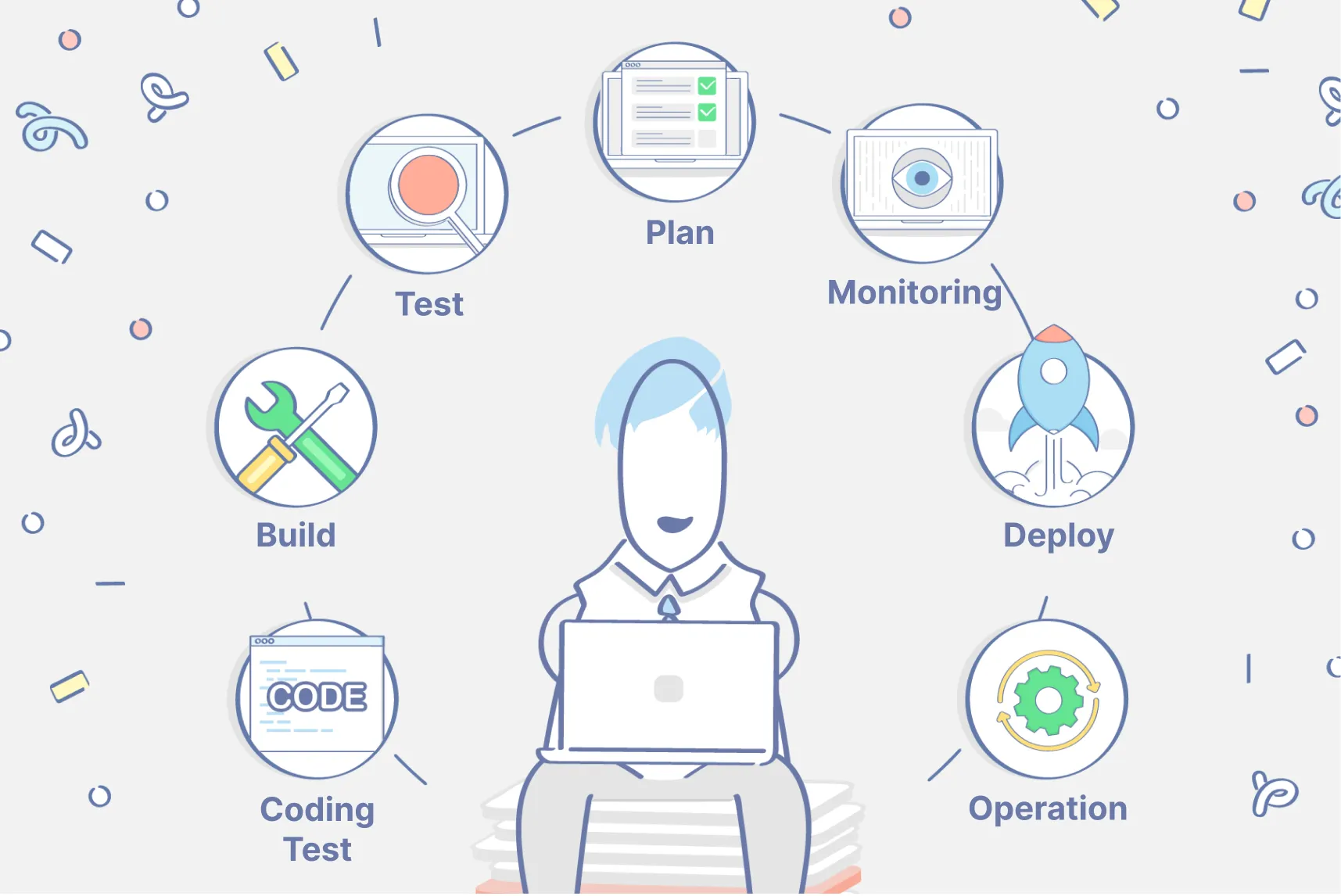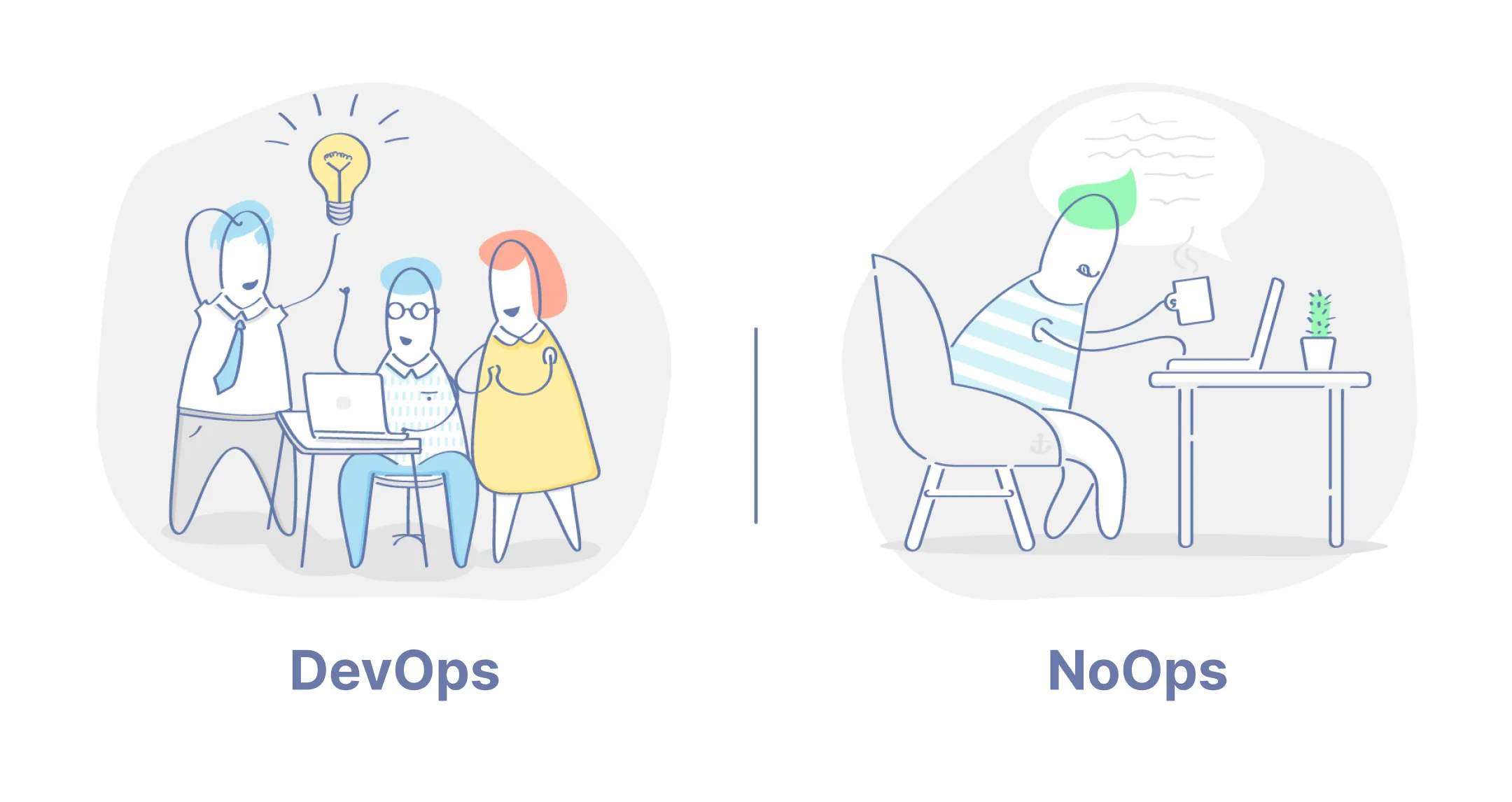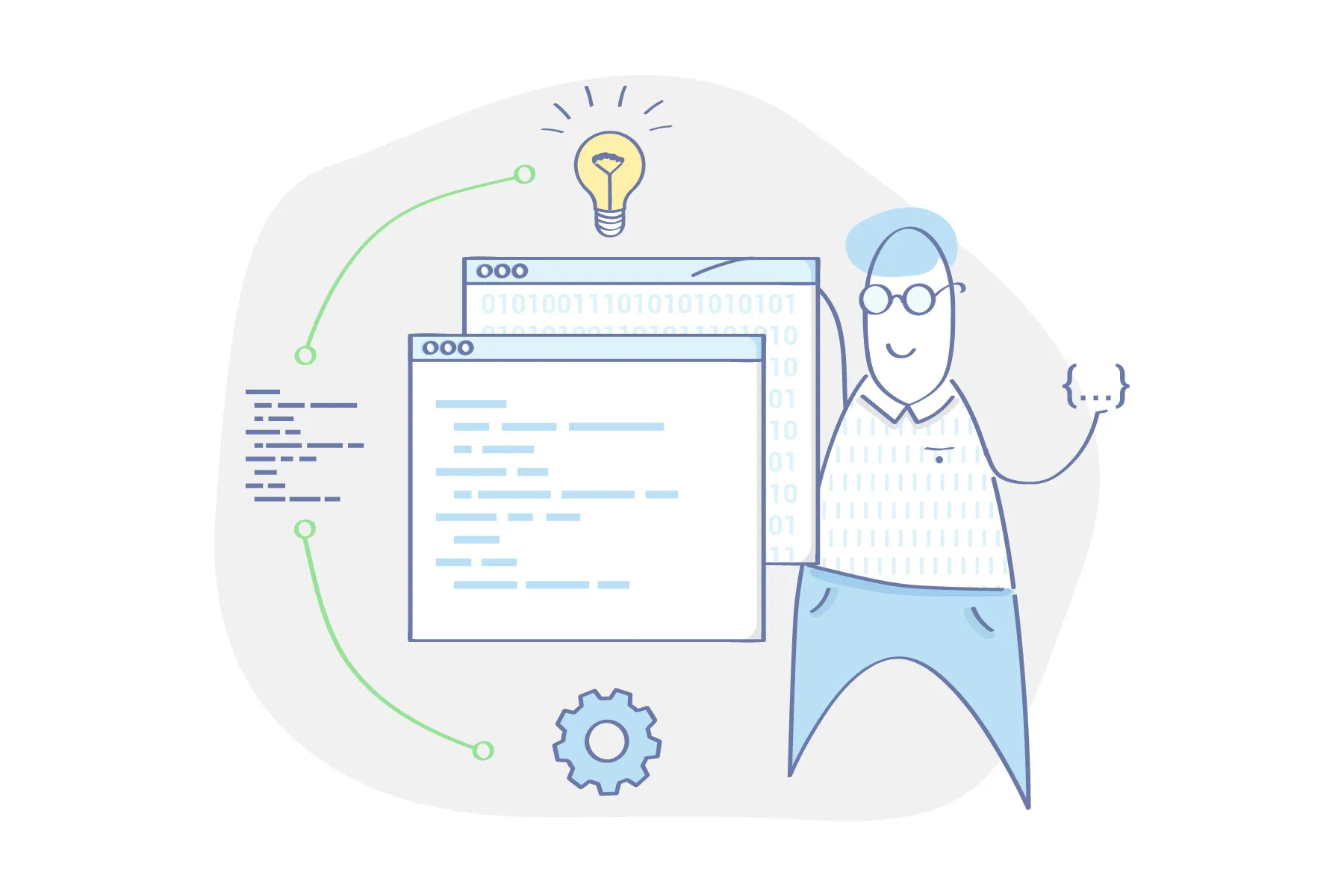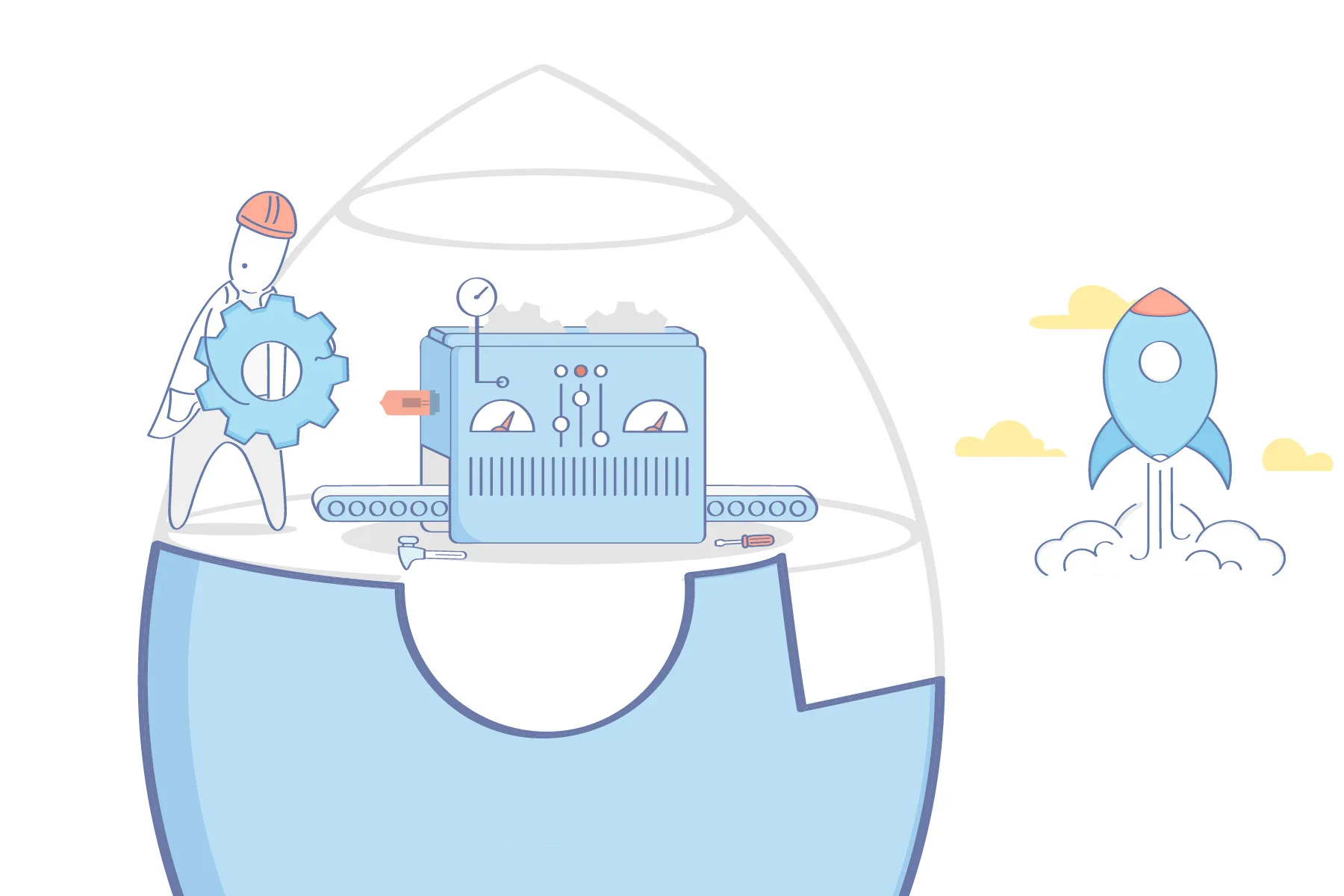

NoOps (No Operations) refers to a process or work environment in which there is no infrastructure or application operations organization in the process of automating and abstracting IT environments. Although it seems to be at the extreme end of DevOps, NoOps can be an intermediate step for early-stage startups that do not have operations staff to move to DevOps.
DevOps and NoOps

DevOps refers to smooth communication and collaboration between application developers and infrastructure operators. DevOps aims to create a process for deploying applications faster and more efficiently, whereas NoOps focuses on improving and automating the deployment, monitoring, and management processes of applications, with the goal of enabling application developers to be directly involved in development, operations, and business aspects, especially in situations where the infrastructure is already sufficiently virtualized.
Team Structure for Early-Stage Startups

Many startups prioritize product development over operations in the early stages. This is because they believe that it is more important to prove the value of their product to customers than to ensure that it is running smoothly. Once the product is successful and generating revenue, they can then focus on building out an operations team to support it.
The trend of startups not having dedicated operations teams is growing in popularity due to the rise of cloud computing and DevOps. This is because DevOps has led many developers to gain experience in continuous integration and deployment of service code, and developers can now operate servers directly in the cloud environment.
Startups and IT Service Operations

How is server monitoring currently being conducted? Is there a check for memory leaks? Are the latest security patches applied? Is there a test environment set up for new releases? If the marketing department conducts a large-scale Facebook event, can the service automatically scale to accommodate it?
Most startups are probably very familiar with these questions. Many startup developers may be handling all of these tasks themselves. And at some point, they may think that a decent operations team will be formed once the service grows larger. However, there are some things to remember before that. Developers need to be able to handle operations well until a decent operations team is formed.
The best way to address this issue is for developers to automate deployment, monitoring, and management processes so that they can identify and resolve problems themselves. There is no need to wait for an operations team to be formed. Developers can create stable services themselves by automating these processes. Let's learn more about NoOps, which is a methodology that helps developers do this.
About NoOps

NoOps is a word that originated from a blog post titled "I Don't Want DevOps. I Want NoOps" written by Mike Gualtieri, a senior analyst and vice president at Forrester Research in 2011. In the blog post, Gualtieri wrote that "NoOps means that application developers no longer need to talk to operations experts." This statement caused a lot of controversy.

Some DevOps practitioners believe that NoOps is a disaster waiting to happen. NoOps is a DevOps Disaster wating toHappen – DevOps.com
However, Platform as a Service (PaaS) solutions like Heroku and CloudFoundry, along with serverless computing options like AWS Lambda, are paving the way for the possibility of NoOps. Many cloud vendors, including IBM, are actively developing solutions with NoOps as a goal for developers.
NoOps and Monitoring Automation for Startups

Thanks to the impact of DevOps, many startup developers have gained experience and knowledge in integration, deployment, and management. However, monitoring remains a weak point for many startups. Many startups still manually check the health of their services and rely on customer feedback to identify issues. First and foremost, I would like to emphasize the importance of automating monitoring for many startups.
Most cloud vendors provide monitoring tools that offer basic alerting capabilities. It's a good practice to set up at least basic alerts. If your monitoring tool offers more advanced alert configuration, consider diving into the details. Monitoring tools are often available as Software as a Service (SaaS), making it easy to detect issues with your IT services.
While basic infrastructure monitoring may be sufficient with alerts, application monitoring often requires more in-depth analysis. In a NoOps setup where developers handle monitoring directly, it's risky to assume that you don't need an application performance analysis service. Application performance is part of the real operational domain, providing insights into situations that you might not encounter in your development environment. It's crucial to configure and address this aspect as well.
Conclusion
For startups, NoOps is not the final form of DevOps but rather the beginning of DevOps. If developers themselves create a good development and operations environment, it will pave the way to build a good operations team when their services scale and operations become more complex. In this sense, it is recommended that early-stage startups adopt NoOps as a way to start their DevOps journey.
.svg)
.svg)






